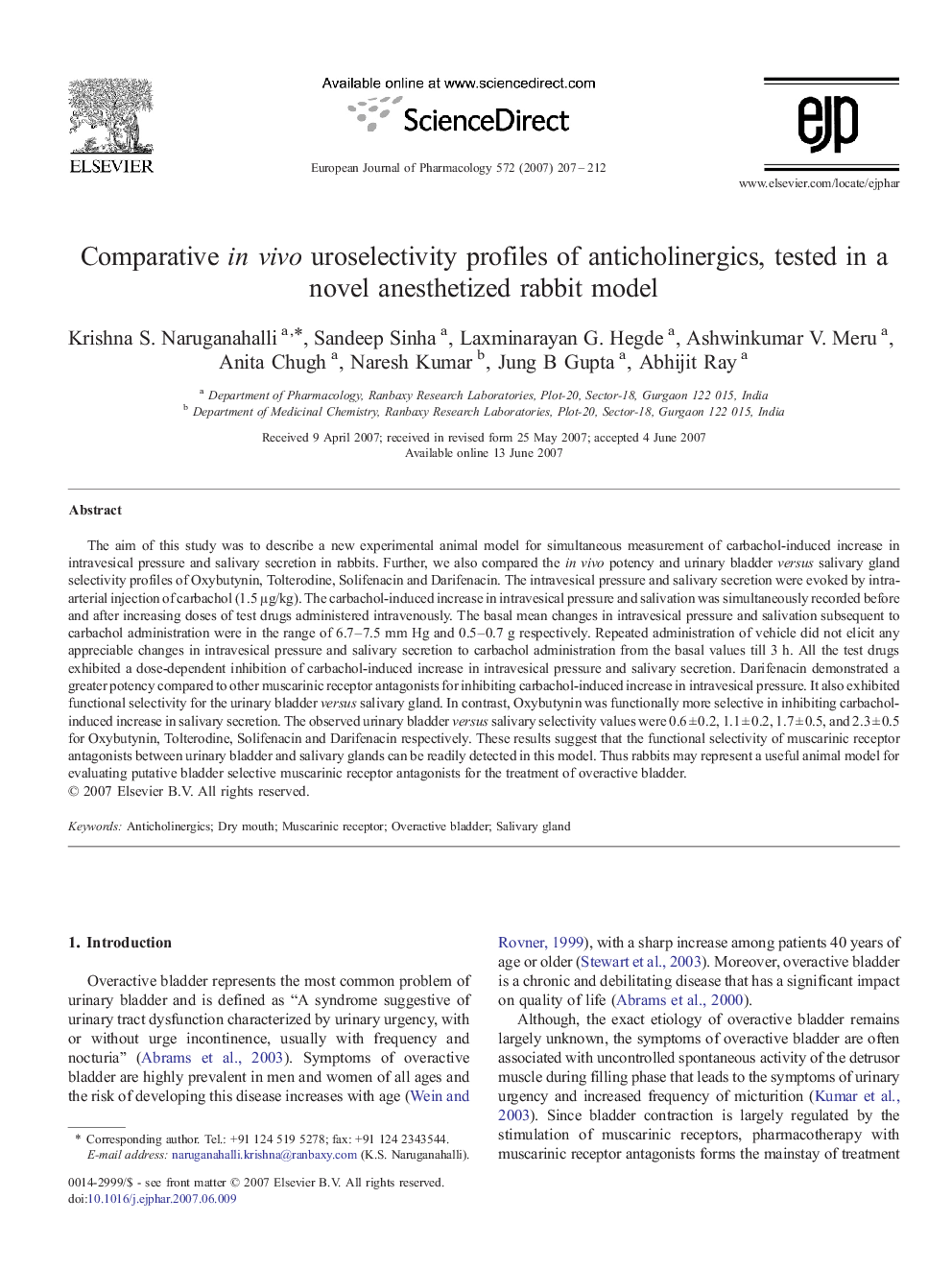| کد مقاله | کد نشریه | سال انتشار | مقاله انگلیسی | نسخه تمام متن |
|---|---|---|---|---|
| 2535778 | 1559132 | 2007 | 6 صفحه PDF | دانلود رایگان |

The aim of this study was to describe a new experimental animal model for simultaneous measurement of carbachol-induced increase in intravesical pressure and salivary secretion in rabbits. Further, we also compared the in vivo potency and urinary bladder versus salivary gland selectivity profiles of Oxybutynin, Tolterodine, Solifenacin and Darifenacin. The intravesical pressure and salivary secretion were evoked by intra-arterial injection of carbachol (1.5 μg/kg). The carbachol-induced increase in intravesical pressure and salivation was simultaneously recorded before and after increasing doses of test drugs administered intravenously. The basal mean changes in intravesical pressure and salivation subsequent to carbachol administration were in the range of 6.7–7.5 mm Hg and 0.5–0.7 g respectively. Repeated administration of vehicle did not elicit any appreciable changes in intravesical pressure and salivary secretion to carbachol administration from the basal values till 3 h. All the test drugs exhibited a dose-dependent inhibition of carbachol-induced increase in intravesical pressure and salivary secretion. Darifenacin demonstrated a greater potency compared to other muscarinic receptor antagonists for inhibiting carbachol-induced increase in intravesical pressure. It also exhibited functional selectivity for the urinary bladder versus salivary gland. In contrast, Oxybutynin was functionally more selective in inhibiting carbachol-induced increase in salivary secretion. The observed urinary bladder versus salivary selectivity values were 0.6 ± 0.2, 1.1 ± 0.2, 1.7 ± 0.5, and 2.3 ± 0.5 for Oxybutynin, Tolterodine, Solifenacin and Darifenacin respectively. These results suggest that the functional selectivity of muscarinic receptor antagonists between urinary bladder and salivary glands can be readily detected in this model. Thus rabbits may represent a useful animal model for evaluating putative bladder selective muscarinic receptor antagonists for the treatment of overactive bladder.
Journal: European Journal of Pharmacology - Volume 572, Issues 2–3, 31 October 2007, Pages 207–212